Note: this article first appeared in the October/November 1999 Zephyr…
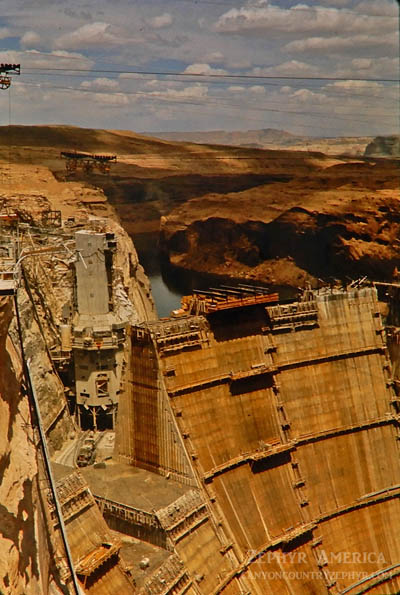
When the Sierra Club council, years ago, turned its back on Glen Canyon and essentially permitted the building of the Glen Canyon dam, I was stunned and bitter beyond belief. The fight had been long and hard. When in 1963, the steel gates closed, the Glen Canyon wilderness died. It was a dreadful nightmare. The reservoir waters, rising inch by lousy inch destroyed everything in its way. Thousands of ancient Indian sites were buried. The reservoir waters eventually covered Music Temple, Cathedral in the Desert, Hidden Passage and Gregory Natural Bridge and many other beautiful and enchanting canyons. The waters soon encroached into Rainbow Bridge National Monument.
That same year as I boated through Glen Canyon on numerous trips, I felt helpless. The destructiveness of it all and the intense and inescapable anguish was hard to bear as the waters took out my canyons. I recalled reading of the same anguish that John Muir, founder of the Sierra Club itself, had experienced when his beautiful Hetch Hetchy valley was flooded near Yosemite.
In my nightmare I wanted to cry out. There was nothing any one could do now. I couldn’t articulate enough to be heard or even to be understood. David Brower in his foreword to Eliot Porter’s book, The Place No One Knew published by the Sierra Club wrote:
“Glen Canyon died in 1963. and I was partly responsible for its needless death. So were you. Neither you nor I, nor anyone else, knew it well enough to insist that at all costs it should endure. When we began to find out it was too late.”
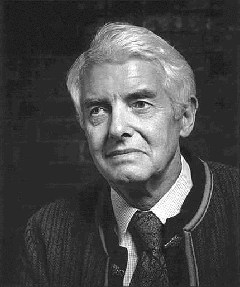
I commiserate with my friend, the former executive director of the Sierra Club. I share his deepest feelings. Brower and his family joined me on a trip into the Glen and Escalante Canyons shortly after the reservoir waters had intruded into Escalante Canyon. I remember one night, in the Escalante, while camped near the terminus of the reservoir I sensed Brower’s anguish as we sat talking around the campfire.
We talked of Terry and Renny Russell. Brower and his family were close to the Russell kids, having taken a Glen Canyon trip with them previously. I related to Brower that I had also made their acquaintance, in Davis Gulch, during a long hike they had taken in the Escalante, and the fact that I had shared my camp in Davis Gulch with them, near where Everett Ruess had also camped years before. These kids left a lasting impression on me as they talked of the river’s restoration and the enchantment of the canyons. As they had the Browers.
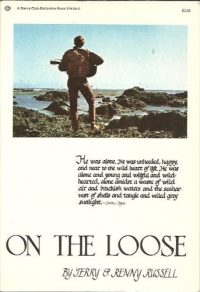
In June 1965, I pulled out an overturned empty raft from the Green River in Desolation Canyon. A short time later I learned that it was the raft of the Russell brothers. Terry drowned. Renny walked out.
The Sierra Club published the insightful book by Terry and Renny, On the Loose, a few years later. And I so appreciated that.
And we talked about the destruction of the canyon and the remorse we both felt concerning our respective roles. And from that trip, I gained a great personal respect and deep admiration for this long-time leader of the Sierra Club.
I could have done more myself back there in the 60’s to help preserve Glen Canyon. I’m as guilty as the Sierra Club. I was too wrapped up in enjoying the beauties of the canyons and the river, a place like of which I had never before experienced. It was like a heaven on earth to me.
But a haunting question remains with me: had I treasured it so much, why didn’t I do more, to speak out more, to help protect it when I had the opportunity. It wasn’t so much “a place no one knew” with me as I knew the canyon damned well. It was my home, my life. David Brower didn’t have that foreknowledge that I had.
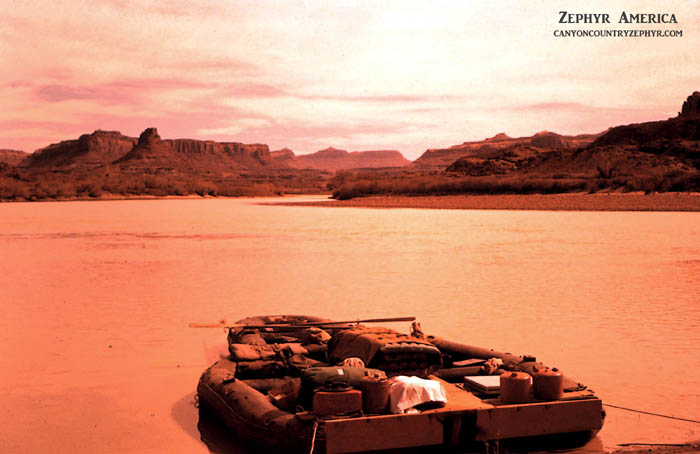
All of the members of our Western River Guides Association knew of Glen Canyon too. And collectively we had taken thousands of people down the river through Glen Canyon. In a late-hour desperation move, we belatedly formed a “Friends of Glen Canyon” group. We proved inarticulate and ineffective. We failed to communicate effectively with the Sierra Club, and we were left standing with nothing to show for our feeble efforts except the dam’s creation and lasting nightmares. Had we done this effectively there might not have been a dam there today. We are all at fault.
So we can ponder on what each of us might have done to preserve it. I suppose its imposing self-flagellation. The real question is what are we going to do about it now.
As the rising waters were about to encroach into Rainbow Bridge National Monument, I unexpectedly met Tom Turner and his party as they tramped down Coyote Gulch. Turner wrote the historical account, Sierra Club, 100 Years of Protecting Nature. There at Icicle Springs we formulated plans for a suit to be brought against the government to protect Rainbow Bridge National Monument from the rising waters. The Friends of the Earth, founded by David Brower, was the lead litigant. Joining too was the Wasatch Mountain Club which consisted of a number of Sierra Club members. And I added my name, as a guide and outfitter, to help get standing to sue.
Judge Willis Ritter, bless him, ruled the waters out of the Monument. On the government’s appeal we lost. But thanks to our wonderful attorneys, Owen Olpin, Jim Lee, and the rest of their staff who worked largely pro-bono or as students, we threw a monkey wrench into the process, slowing it down some. The effort they made was meritorious and they’re not forgotten. It set the stage for future actions.
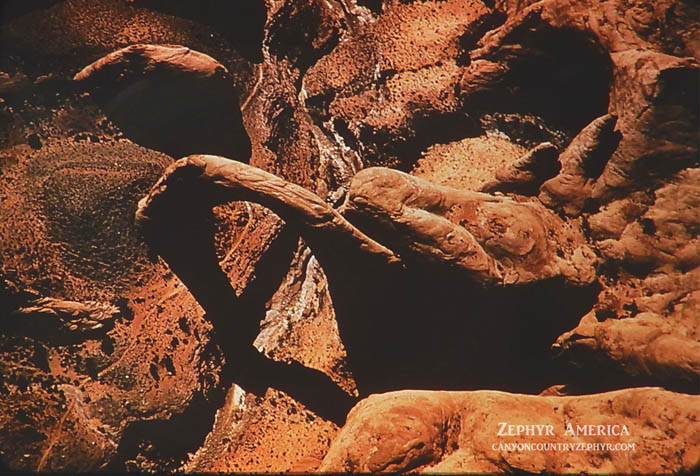
I remember vividly of the time a small group of us demonstrated our feelings toward the dam on one Memorial Day weekend at the dam’s visitor center. We had our little peaceful demonstration; the Page locals had their fun–swearing at us, giving us the finger, and stealing our signs; and the cops repeatedly warned us not to impede traffic and threatened us with arrest if we did. We were only handing out leaflets to each visitor and passing car. But at day’s end we felt much better. Soon I was to report this event to Abbey and he made the most of it in his great masterpiece, The Monkey Wrench Gang.
Once I joined a group of government people, about twenty of them, to look over a road route the Utah Highway Department wanted to build over the Waterpocket Fold, the Escalante, and around the Kaiparowits Plateau. The proposed road would have connected the marina sites of Bullfrog and Wahweap, passed close to Stevens Natural Arch, and bridged over the Escalante near the mouth of Coyote Gulch. A bad, bad project.
I delighted in watching Henry Helland, Director of Highways, fume and shout about a flyer full of facts that I handed out to the officials. Printed on yellow paper, he called it yellow journalism. Superintendent Bates Wilson of Arches NP stepped in about that time to control matters with his easy humor and his great dutch-oven cooking.
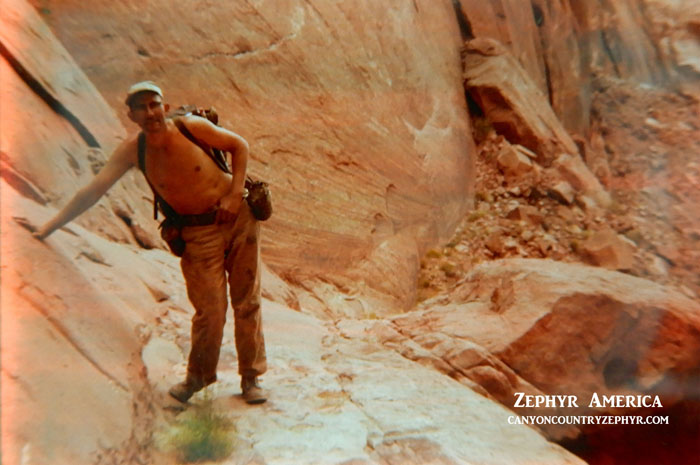
On that particular trip, someone had allowed the campfire to continue burning as we hiked along the Waterpocket Fold tracing the route of the proposed road. On our return that evening, most of the tents and sleeping bags had burned up–only the ash remained. A wind had arisen during the day and spread the sparks about. Scheduled to camp out yet another night, Helland canceled the trip and everybody motored home. A good omen indeed.
It was on that issue that my environmental friends, Ruth Frear, Jack McLellan, June Viavant and a host of others of the Sierra Club and related groups lobbied hard against the appropriation of congressional highway funds to build the road. The funds were never appropriated. It was one of our greatest victories ever.
But it was a raging issue. At one time Jack McLellan asked Mohr Christensen if his group could come to Escalante and make a presentation. Mohr, a cousin of mine and the chairman of the publicity committee of the Escalante Chamber of Commerce responded:
Dear Mr. McLellan:
As I promised, I brought the matter of your proposed visit to a meeting of the Chamber of Commerce last evening. The vote was unanimously against asking you to come.
W.M. Christensen
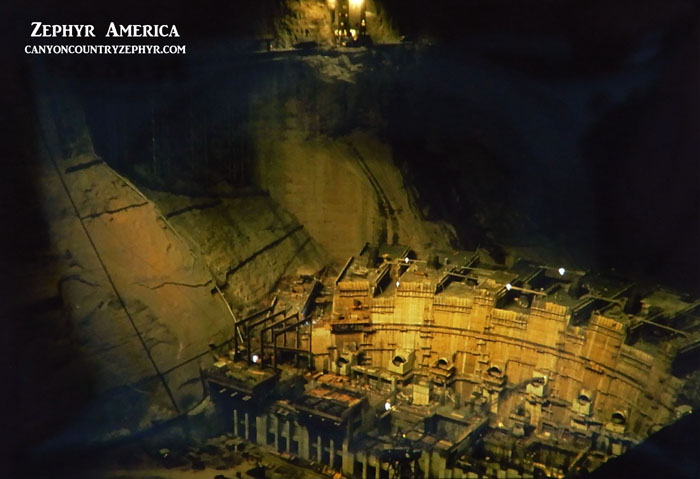
Eliott Porter, author of the Sierra Club’s, The Place No One Knew, and his party joined me on a trip into Coyote Gulch. I was elated to have him, and it was a fascinating trip. I rolled his camera box down a steep sandy hill into the rocky creek far below after cutting the pack strap to keep my pack horse from rolling down too. I remember my concern as to how Eliott would react. He reacted.
Those were beautiful days. Once I had to wade my horses across the newly-created Coyote Gulch lake to get them to higher ground after a ledge had fallen into the creek bottom. Then I had to cut steps into the sandstone to give my horses footing to get around the body of water. The lake receded and finally broke through after a few good flash floods. And the canyon quickly returned to its enchanting former self, oblivious to the natural damming process. May the canyons experience the same after the draining of the reservoir behind the Glen Canyon dam.
Of course I’ll have to mention again my momentous meeting with Ed Abbey at Lee’s Ferry. Our meeting was instrumental for both of us regarding our own future plans and our working toward the restoration of Glen Canyon. It culminated in a long friendship and his eventual publication of The Monkey Wrench Gang. And when Ed died 10 years ago, he left us all a great legacy. Glen Canyon must be restored.
Old duffers like myself are sometimes useful, but we need to swell our ranks with energetic and high-minded young people who have the guts, sensitivity, and honor to see this thing through. Together we might yet slow down this relentless, destructive and ruthless mindset that’s destroying our Earth. A dream? Maybe. But a wonderful dream. We’ve got to start somewhere at some time. And who knows, maybe, just maybe, we’ll yet restore Glen Canyon to its former grandeur.
Glory, glory, hallelujah!
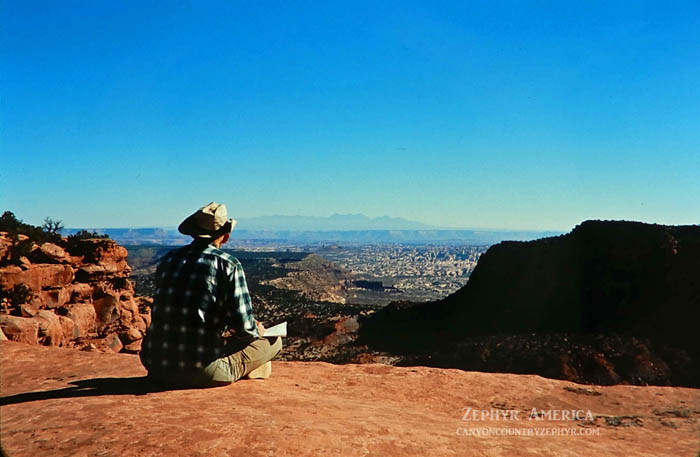
Ken Sleight still lives at Pack Creek Ranch near Moab.
Click Here to Read the Previous Installments of Ken Sleight Remembers…
And Click Here to Read Edna Fridley’s account of the Last Float Down Glen Canyon…
To comment, scroll to the bottom of the page.
Zephyr Policy: REAL NAMES ONLY on Comments!
Don’t forget the Zephyr ads! All links are hot!





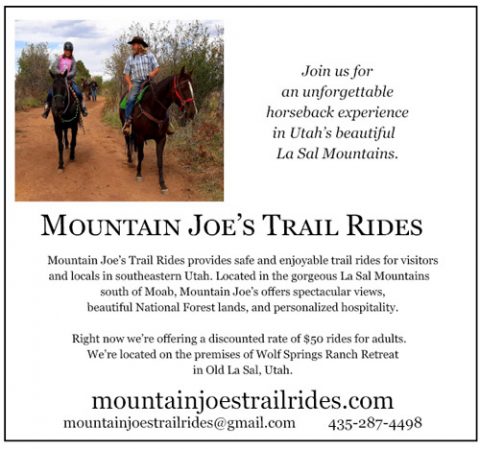
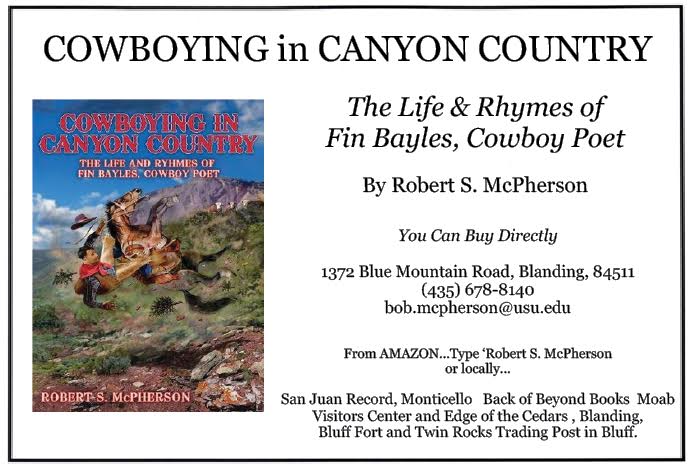
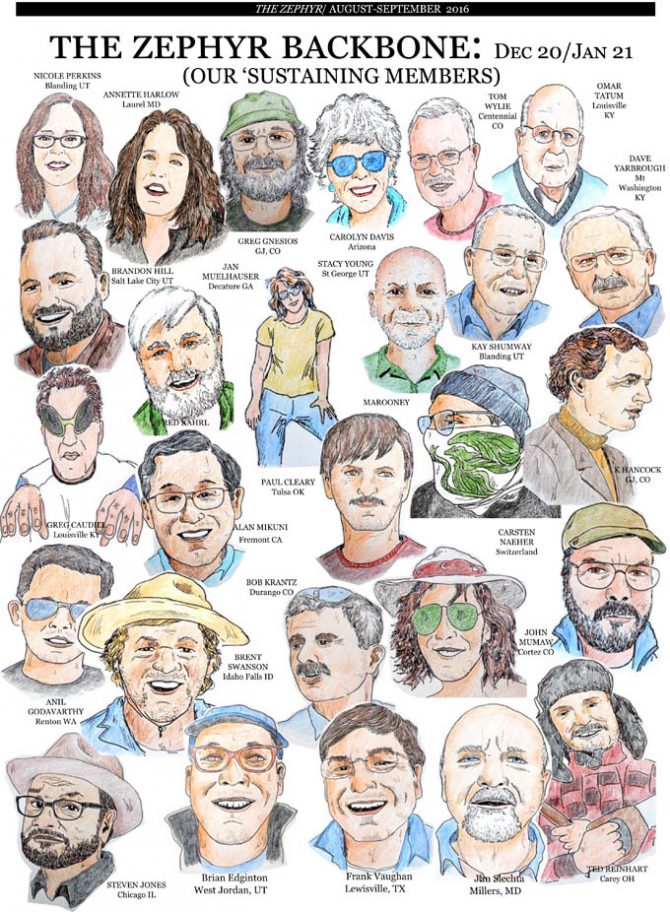
As I write this, the water level in Lake Powell stands at 3582 feet above sea level and falling rapidly. By April 2021, it should be down to less than 3570 feet. Unless there are some big storms to build up snow pack in the upper Colorado basin this winter, by spring 2022 we could see water levels down to less than the 3555 foot level of spring 2005, the lowest since the dam filled in about 1971. Lake Powell is slowly drying up and the more pressing needs to maintain water levels in Lake Mead will require more releases from Glen Canyon Dam in dry years to come. It won’t come in my lifetime, but sometime in the next 50 years or so Glen Canyon Dam will be deemed useless and hopefully dismantled. Perhaps this will be one good outcome of the long-term drought brought on by a changing climate
The water level is now 3554.9 as of july 24th 2021.